Fujisan / Mt. Fuji
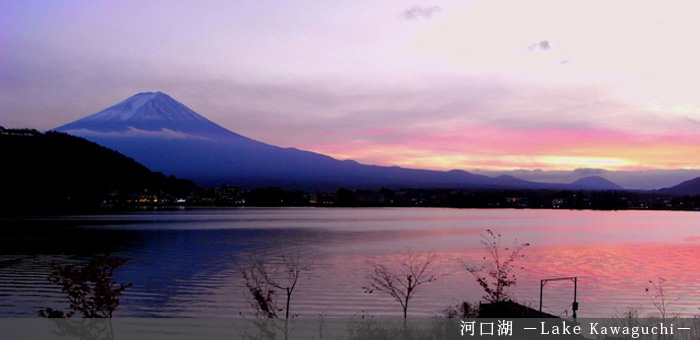
The Mt. Fuji is located between Yamanashi prefecture and Shizuoka prefecture.
There are 3 main areas around it as follows;
- Yamanashi / Lake Kawaguchi (Kawaguchiko) , Lake Yamanaka (Yamanakako)
- Shizuoka / Fuji and Fujinomiya, Gotenba, Mishima and Numazu
- Shizuoka (Hot Spring area) /Hakone, Atami, Izu
 Mt. Fuji FAQ
Mt. Fuji FAQ
 Mt. Fuji Tours (By Japanican)
Mt. Fuji Tours (By Japanican)
Booking.com
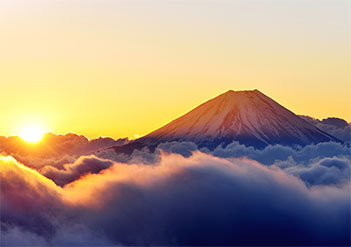
Mt.Fuji Viewpoint
- About Mt. Fuji -
Most people in Japan think that Mt. Fuji is a symbol of Japan. Throughout the history of Japan, people worshipped Mt. Fuji as a mountain where the god lives. It has been and still is a sacred place where people wants to visit and many people try to climb the mountain to see what it is like to stand at the highest place of Japan. Since Japan is a place where you can enjoy all 4 seasons, people enjoys the view of Mt. Fuji changing every day. In spring, you can enjoy the combination of Mt. Fuji and the cherry blossoms. In summer, you can enjoy climbing Mt. Fuji or see the mountain without any snow. In autumn, the red an orange leaves makes the mountain's blue more beautiful. Lastly in winter, snow will cover the mountain and this view is the most famous one which everyone thinks of as the usual Mt. Fuji.
- Viewing Mt. Fuji -
With the point that Japan is a place with all 4 seasons, there are days that you can see the mountain clearly or there are maybe days with some difficulties to see. According to the research done from 1991 to 2003, it seems that winter is the best season to view Mt. Fuji clearly. If you are planning to come to Japan and want to see Mt. Fuji, please see the graph below and check the viewing percentage and choose when you are visiting.

1. Owakudani
The area is one of the top 50 beautiful views in Kanagawa and while exploring the area you'll discover the sulfurous fumes, hot springs and hot rivers.
2. Kintokiyama
This mountain is popular for the Kintaro Legend. You can enjoy the view of Mt. Fuji very cleary from the top.
3. Otome Toge
This is the road to Kintokiyama and you can enjoy the view of Mt. Fuji while climbing the mountains.
4. Ashinoko Sky Line
You can both enjoy the view of Ashinoko and Mt. Fuji.
5. Komagatake
There is a ropeway to the top of the mountain so you can easily enjoy the view of Mt. Fuji.
6. Hakone Detached Palace Garden
You can enjoy the flowers and the view of Mt. Fuji from this garden.
7. Motohakone
It is home to historical places such as Hakone Shrine and the Hakone Checkpoint Remains. You can see Mt. Fuji reflecting at the surface of Ashinoko.
8. Taikan Pass
One of the best driving roads to enjoy the view of Mt. Fuji.
Let's see how you can enjoy and experience The Mt. Fuji!
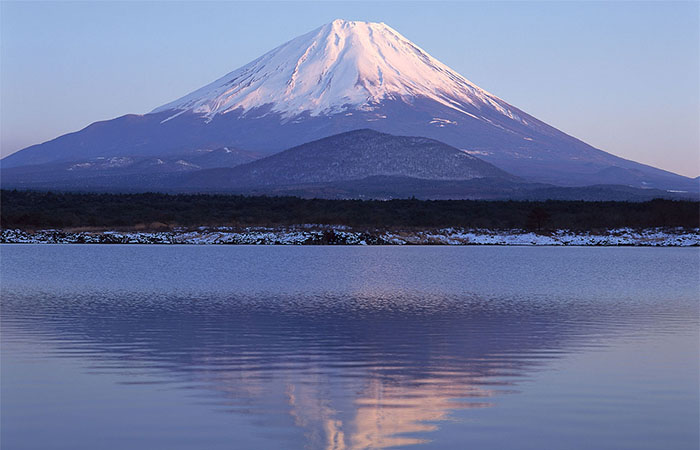
Lake Kawaguchi (Kawaguchi) and Lake Yamanaka (Yamanakako) are the best areas for the people who are wishing to view Mt. Fuji nearby and fancy climbing Mt. Fuji. It takes only 2 hours by direct highway buses from Tokyo and Shinjuku, then you can take another bus which takes you directly to the Fifth Station (the halfway up Mt. Fuji). During Summer, it is very popular and many tourists visit there in order to enjoy the climbing as well as the amazing nature. (Please be noted that there are no tours during Winter.)
Shizuoka / Fuji and Fujinomiya, Gotenba, Mishima and Numazu are the best are if you are travelling by Shinkansen, as these areas are exactly between Tokyo and Nagoya, Kyoto and Osaka. Thanks to this, you can easily make the stopover and the stay around there on the way to your destination. You can enjoy viewing beautiful Mt. Fuji and also it is possible to plan the Mt. Fuji climbing.
Shizuoka (Hot Spring area) / Hakone, Atami, Izu are one of the best hot-spring (Onsen) areas in Japan. Unfortunately, it is not easy to make a plan to climb Mt. Fuji from this area but you can enjoy amazing Japanese experiences having both hot-spring (Onsen) and the view of Mt. Fuji. (If you stay in Atami Area, please be noted that you will have to drive for 20 min in order to reach the place to view Mt. Fuji.)
Three days pass [Tokyo ⇔ Hakone area ⇔ Fuji area]
A panoramic view of Mt. Fuji and Lake Kawaguchi from the Kachi-Kachi Yama Ropeway.
The Fuji Hakone Pass is valid for 3 days and exclusive to non-Japanese visitors. It covers excursion travel in the popular Fuji and Hakone areas.
The pass includes discount round-trip transport from Tokyo (Shinjuku) (on the Odakyu Line and the Chuo Highway Bus), unlimited use of specified transport in the Hakone and Fuji areas, and discounts on entrance and other fees to about 60 museums and restaurants.
You can take the Hakone Tozan Line, which runs along the steep slopes of Hakone's mountains, famous as tourist attractions, or the Hakone Sightseeing Cruise over Lake Ashi.
The Hakone/Fuji area is rich with nature, so you can see various landscapes in each season.
*For furthermore information, please check HERE
 Mt. Fuji Climbing
Mt. Fuji Climbing
 Mt. Fuji Explorer
Mt. Fuji Explorer
 Fujikawaguchiko Sightseeing information site
Fujikawaguchiko Sightseeing information site
 Yamanashi Home of Fujisan (Mt. Fuji)
Yamanashi Home of Fujisan (Mt. Fuji)
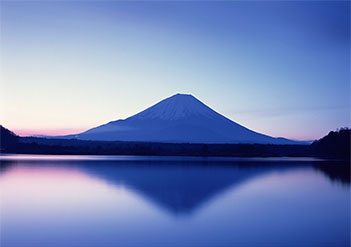
Lake Kawaguchi(Kawaguchiko / 河口湖) is one of Fuji Five Lakes and the easiest to access from Shinjuku, Tokyo by highway buses. There are many tourist spots and activities like museums, amusement park, fishing, boating and hot spring (Onsen) with the view of Mt. Fuji.
Many hotels and accommodations are nearby the lake and here is an entrance city for Mt. Fuji Tour and climbing Mt.Fuji. You can find direct buses from Lake Kawaguchi Station to the fifth stage of Mt. Fuji.

Yamanaka Lake (Yamanakako / 山中湖) is the largest among Fuji Five Lakes and it takes around 2.5 hours from Shinjuku station in Tokyo by highway buses. In there, you can enjoy not only the beautiful view of Mt. Fuji and the lake but also outdoor activities as well as hot springs (Onsen) around the lake. During Summer, there are many activities like boating, fishing, water skiing, wind surfing etc and also camping, tennis etc. You can also find wonderful Ryokan, hotels and B&B with hot spring (Onsen) and it would be nice to relax in there after the activities!
Booking.com

 Kachikachi Mountain
Kachikachi Mountain
Tenjosan (Mt. Tenjo; 1104m) is considered to be the model of Japanese folklore "Kachikachi-yama (Mt. Kachikachi)." You can enjoy hiking with the view of Mt. Fuji. There is also the reopway connects Kawaguchi-Kohan Station on the piedmont and Fujimidai Station at mountaintop, which takes you to see Mt. Fuji in 3 minutes!
 Itchiku Kubota Art Museum
Itchiku Kubota Art Museum
This museum features the Kimono artist Kubota Itchiku (1917-2003) was well-known Tsujigahana silk dyeing. It is the pattern dying style that flourished in the Muromachi period. (1336–1573). \many exhibitions have been held in all over the world since 1977. The building included the garden and Japanese tea room is also blessing.
 Kawaguchiko Music Forest Museum
Kawaguchiko Music Forest Museum
Features the collection of music boxes from all over the world included modern, antiques etc. There are also organ hall and history hall where you can enjoy the music with various kind of instruments. The garden is also amazing with the view Mt. Fuji and seasonal flowers.
 Saiko Iyashi-no-sato Nenba
Saiko Iyashi-no-sato Nenba
Nearby Mt. Fuji and you can easily step into the old Japanese village and culture. The place used to be one of the most beautiful thatch roofing houses village in Japan and they are now open for the people as museums, restaurants, work shops, souvenir shops etc.
 Caves: Bat Cave こうもり穴 / Ice Cave 鳴沢氷穴 / Wind Cave 富岳風穴
Caves: Bat Cave こうもり穴 / Ice Cave 鳴沢氷穴 / Wind Cave 富岳風穴
3 caves have been developed and opened to tourists to explore.
Bat Cave : Mysterious shave, quite warm inside and you find many bats.
Ice Cave : Very long (length 21m) in total underground. It’s very chilly inside.
Wind Cave : Long cave (width 201m) in total and located in the sea of trees on Mt. Fuji.
 Outdoor activities in Lake Kawaguchi [http://c-l-s.jp/original27.html] and [http://www.foret-aventure.jp/eng/index.html]
Outdoor activities in Lake Kawaguchi [http://c-l-s.jp/original27.html] and [http://www.foret-aventure.jp/eng/index.html]
 Fugaku Wind Cave & Narusawa Ice Cave
Fugaku Wind Cave & Narusawa Ice Cave
 Houtou-Fudou (Noodle shop)
Houtou-Fudou (Noodle shop)
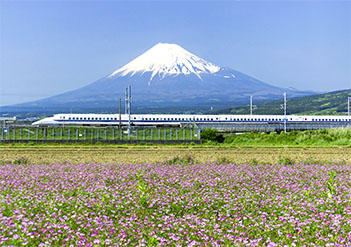

From Tokyo area
From Shinjuku station *Starting your journey from Shinjuku is the easiest and the most convenient to reach Kawaguchiko Station.
 To Kawaguchiko station by Expressway bus [Approx. 120 minutes / 1,750yen]
To Kawaguchiko station by Expressway bus [Approx. 120 minutes / 1,750yen]
Shinjuku West Expressway Bus Terminal → (Expressway Bus : Approx. 120 minutes / 1,750yen) → Kawaguchiko station
 By train [Approx. 130 minutes / 3,390yen]
By train [Approx. 130 minutes / 3,390yen]
Shinjuku station → (JR Ltd. Exp. "Kaiji" : Approx. 62 minutes / 1,320yen + Exp. ticket 930yen) → Ootsuki station → (Fujikyu Line : Approx. 60 minutes / 1,140yen) → Kawaguchiko station
From Tokyo station *If you are planning to take Shinkansen before or after Kawaguchi Lake trip, Tokyo station is very convenient to start / return as the bus terminal and JR station are in the same place.
 By Expressway bus [Approx. 150 minutes / 1,750yen]
By Expressway bus [Approx. 150 minutes / 1,750yen]
Tokyo Station Yaesu South Exit Bus Terminal → (Expressway Bus : Approx. 150 minutes / 1,750yen) → Kawaguchiko station
 By train [Approx. 150 minutes / 3,560yen]
By train [Approx. 150 minutes / 3,560yen]
Tokyo station → (JR Chuo Line : 14 minutes) → Shinjuku station → (JR Ltd. Exp. "Kaiji" : Approx. 62 minutes / (total fee of JR)1,320yen + Exp. ticket 930yen) → Ootsuki station → (Fujikyu Line : Approx. 60 minutes / 1,140yen) → Kawaguchiko station
How to get to the fifth stage of Mt. Fuji from Kawaguchiko
From Kawaguchiko station to the fifth station of Mt. Fuji [Approx. 50 minutes / (one-way)1,540yen, (round trip)2,100)]
Kawaguchiko station → (Fujikyu bus : Approx. 50 minutes / (one-way)1,540yen, (round trip)2,100) → The fifth station of Mt. Fuji
* Everyday services from April 28th to November 4th and Saturday and Sunday of November.
* Everyday relief bus services from July 1st to Sep. 2nd. Out of services from Dec. 1st to Apr. 27th.
* One way for adult rate : 1,540yen (Kawaguchiko Station - the fifth stage of Mt. Fuji, fare for a child is 750yen)
* Round trip for adult rate : 2,100yen (Kawaguchiko Station - the fifth stage of Mt. Fuji, fare for a child is 1000yen)
* Fujikyu Yamanashi Bus / TEL : 0555-72-6877
* It is possible to stop to run necessarily, when Fuji Subaru Line is closed to traffic.
From Osaka / Kyoto area
You can directly make your journey from Osaka to Kawaguchi Lake and select the better transportation considering your plan afterwards.
 By Train
By Train
Shin-Osaka station → (JR Tokaido Shinkansen / 2 hours) → Mishima station → (Fujikyu bus / 2 hours, it may be required a transfer at Gotemba Station) → Kawaguchiko station
 By Expressway bus *Express bus is at service every day (one service per day)
By Expressway bus *Express bus is at service every day (one service per day)
Kintetsu Nanba station West Exit (9:55pm) → Osaka station (10:15pm) → Kyoto station Hachijyo Exit (11:18pm) → Kawaguchiko station (8:13am)
[Reservation center] : Kinki Express Bus Center / TEL: 06-6772-1631 (9:00am - 7:00pm)
From Nagoya area
 By Train
By Train
Nagoya station → (JR Tokaido Shinkansen) → Mishima station → (Fujikyu bus / 2 hours, it may be required a transfer at Gotemba Station) → Kawaguchiko station
 By Expressway bus
By Expressway bus
Meitetsu Bus Center (7:40am) → Kawaguchiko station (12:00pm)
[Reservation center]
Fujikyu Express Bus Reservation Center / TEL: 0555-72-5111 (9:00am - 6:00pm)
Meitetsu Bus Center / TEL:052-582-0489 (8:00am - 7:00pm)
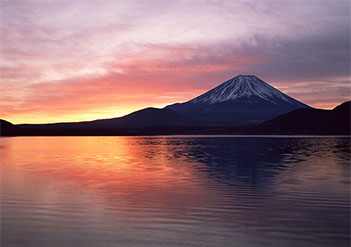

 Fuji-Q Highland
Fuji-Q Highland
Fuji-Q Highland is the amusement park which has many thrill ride, located in Yamanashi prefecture. They have mainly 4 thrill ride attractions, "Fujiyama", "Dodonpa", "Eejanaika" and "Takabisha" and there are more attractive ones in there. Since 2000, there are some family sessions such as "Thomas land" and "HamuHamu Doki Doki! Kingdom". Moreover, during winter, they have ice skating place which is open the earliest in Kanto area.

From Shinjuku station
 By Expressway bus [Approx. 100 minutes / 1,750yen]
By Expressway bus [Approx. 100 minutes / 1,750yen]
Shinjuku Expressway Bus Terminal → (Expressway Bus : Approx. 100 minutes / 1,750yen) → Fuji-Q Highland
 By train [Approx. 130 minutes / 3,330yen]
By train [Approx. 130 minutes / 3,330yen]
Shinjuku station → (JR Ltd. Exp. "Kaiji" : Approx. 62 minutes / 1,320yen + Express ticket 930yen) → Ootsuki station → (Fujikyu Line : Approx. 55 minutes / 1,080yen) → Fuji-Q Highland
From Tokyo station
 By Expressway bus [Approx. 150 minutes / 1,750yen]
By Expressway bus [Approx. 150 minutes / 1,750yen]
Tokyo Station Yaesu South Exit Bus Terminal → (Expressway Bus : 150 minutes / 1,750) → Fuji-Q Highland
Booking.com

